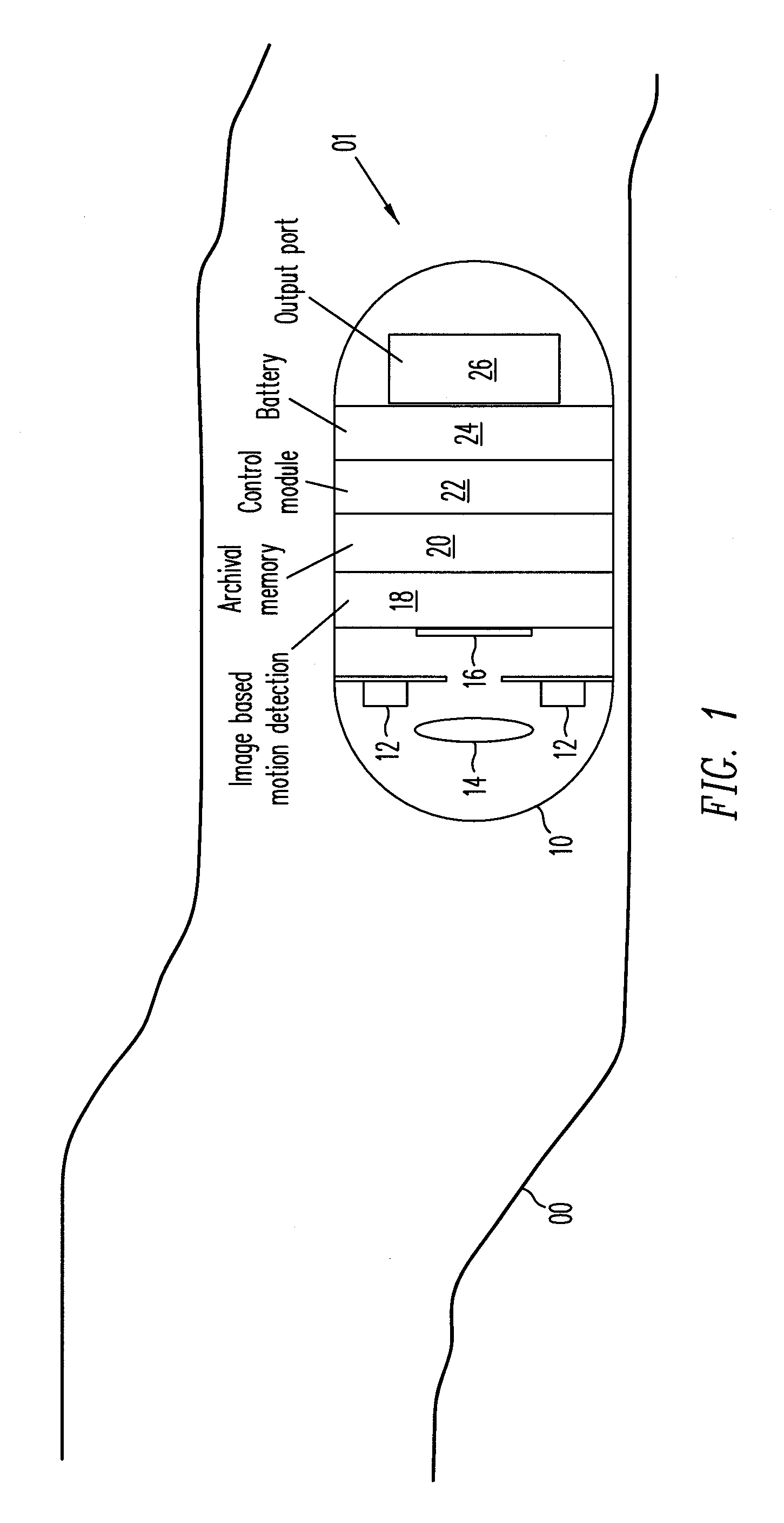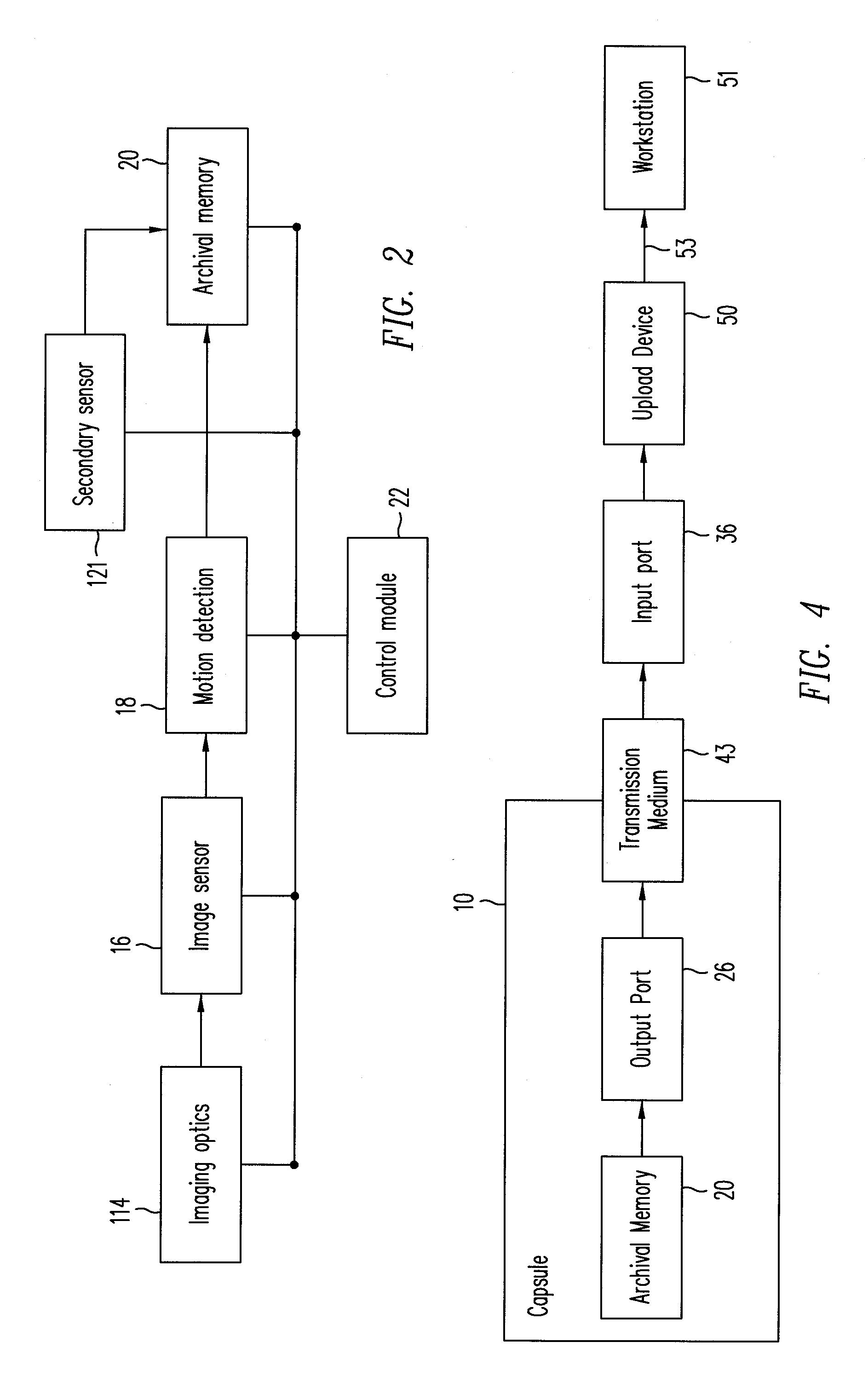Movement detection and construction of an "actual reality" image
a technology of moving detection and construction, applied in the field of data compression, can solve the problems of limiting the application of routine health screening tools, invasive and uncomfortable for patients, and affecting the patient's comfort, and achieve the effect of minimizing a cost function
- Summary
- Abstract
- Description
- Claims
- Application Information
AI Technical Summary
Benefits of technology
Problems solved by technology
Method used
Image
Examples
Embodiment Construction
[0042]The Copending patent applications disclose a capsule camera that overcomes many deficiencies of the prior art. Today, semiconductor memories are low-cost, low-power, easily available from multiple sources, and compatible with application specific integrated circuit (ASIC), sensor electronics (i.e., the data sources), and personal computers (i.e., the data destination) without format conversion devices. One embodiment of the present invention allows images to be stored in an “on-board storage” using semiconductor memories which may be manufactured using industry standard memory processes, or readily available memory processes. To optimize the use of the semiconductor memory device for diagnostic image storage, a method of the present invention may eliminate overlap area between successive images to reduce the storage requirement.
[0043]According to one embodiment of the present invention, a specialized frame buffer is provided. As a 640×480 resolution VGA-type image has 300,000 ...
PUM
 Login to View More
Login to View More Abstract
Description
Claims
Application Information
 Login to View More
Login to View More - R&D
- Intellectual Property
- Life Sciences
- Materials
- Tech Scout
- Unparalleled Data Quality
- Higher Quality Content
- 60% Fewer Hallucinations
Browse by: Latest US Patents, China's latest patents, Technical Efficacy Thesaurus, Application Domain, Technology Topic, Popular Technical Reports.
© 2025 PatSnap. All rights reserved.Legal|Privacy policy|Modern Slavery Act Transparency Statement|Sitemap|About US| Contact US: help@patsnap.com



